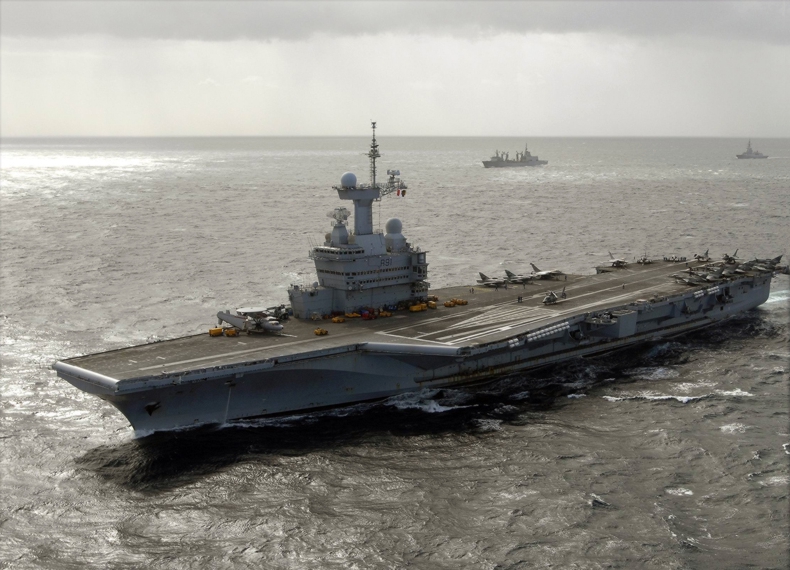
European Defence: The Full Package

In
As EU Member States are increasing defence spending and strengthening their armed forces, the role of the EU institutions is to push for those efforts to be coordinated, so that the additional means generate the maximum additional force.
*****
European Defence: The Full Package
As EU Member States are increasing defence spending and strengthening their armed forces, the role of the EU institutions is to push for those efforts to be coordinated, so that the additional means generate the maximum additional force.
The European Defence Fund (EDF) already enables Member States to collectively design and build new arms and equipment. The newly announced instrument for joint procurement, EDIRPA, will enable Member States to collectively acquire what they have built together (or off-the-shelf).
But coordination can and should go further and eye the capabilities themselves: the actual military units that will be equipped with the new weapon systems. The key to maximise the efficiency, but also the interoperability and employability of Europe’s armed forces, lies in the creation of permanent multinational force packages, with national units as building-blocks. How would this work?
Taking the army as an example, the building-blocks would be national brigades, to be permanently anchored in a multinational army corps or division. Today, most Member States still operate at least one brigade in their armies, but often these are incomplete, lacking key capabilities, such as air defence or combat engineers. A three-pronged approach would be followed.
Firstly, in the framework of a multinational army corps or division, a combination of integration and specialisation would be organised in the various support functions. In areas where some, or all, of the Member States contributing a brigade had only limited capabilities, these would be integrated into a single multinational support unit. In areas where some contributing Member States had no capabilities at all, a division of labour would be established, with the national support units of some countries supporting the brigades of the others. Thus, all brigades would be more useable, in more scenarios, than in cases where they had to rely on national support only. This approach would also be much more cost-effective.
A second element of this approach is that, in the framework of a multinational corps or division, the participating Member States would harmonise doctrine as well as weapons and equipment. This would allow for deep interoperability between all constitutive units, make integration or a division of labour much more feasible, and generate synergies and effects of scale. If all brigades were to use the same vehicles, for example, that would drastically reduce the logistics tail on operations, while making procurement simpler and more cost-effective.
Thirdly, the multinational corps or divisions would serve as the benchmark to quantify the need for strategic enablers. The Member States that made up a multinational formation would acquire the necessary strategic enablers without having recourse to the assets of others.
The same approach could be applied to navies, with national ships as the building-block of multinational squadrons, and to air forces, with multinational wings made up of national squadrons. One could also imagine a European drone command, cyber command, air defence command, etc., operating national assets as if they constituted a single fleet or force, under one commander, and with a single multinational structure for training, exercises, and logistics.
Creating such permanent multinational force packages would allow European states to greatly improve the readiness of their forces and increase their capacity to generate larger-scale deployments, be it for expeditionary operations or for the forward deployment of troops in the context of territorial defence. It would be the model on which to construct both the EU’s Rapid Deployment Capacity (RDC) and NATO’s New Force Model (NFM).
This model actually has been on the EU’s drawing board for some time: the Crisis Response Operation Core (CROC), one of the projects under Permanent Structured Cooperation (PESCO). But even as this remains a mostly conceptual exercise, it has been watered down already. It is not too late to resurrect the approach, however.
At a time when all EU Member States are stepping up their defence efforts, and when many are entering new capability areas, it would be an absolute waste if all would remain locked up in a purely national approach which would yield a lot less new capability that a coordinated and indeed integrated scheme. The EU has been advocating for comprehensive force packages for years; NATO has now taken up the call too in its NFM. Perhaps we should simply do it now.
Prof. Dr. Sven Biscop is director of the Europe in the World programme at the Egmont – Royal Institute for International Relations in Brussels, and a professor at Ghent University.
For more details, see:
- Sven Biscop, Battalions to Brigades: The Future of European Defence. In: Survival, Vol. 62, 2020, No. 5, pp. 105-118.
- Sven Biscop, The New Force Model: NATO’s European Army? Policy Brief No. 285. Brussels, Egmont Institute, September 2022.
(Photo credit: Wikimedia Commons)